As the weather warms, plans for landscaping gardens and plotting out flower beds spring forth. Perennials are particularly helpful because they return to bloom year after year, growing back from roots that are sturdy enough to withstand the winter.
In our current business climate, “perennial” also applies to the multigenerational workforce whose cohesiveness is critical to each company’s success.
Gina Pell, a tech entrepreneur and creative director, first coined the term “perennial” in 2016, and it describes a mindset that people of any age can use to foster unity in the workplace. Perennials are those who have bridged the generational divide and are inclusive, creative, curious, adept with technology, anchored in the present and filled with a clear growth mindset that always pushes them forward. Importantly, being a perennial involves being aware of unconscious biases associated with different generations, while also embracing their unique talents and differences.
What is a Multigenerational workforce?
The inclusive attitudes of Gina Pell’s perennial are important because, for the first time in history, there are now five generations in the workforce: traditionalists, baby boomers, Generation X, millennials and Generation Z. However, according to Deloitte, only 10 percent of organizations say they are ready to address this trend, despite 70 percent saying that leading a multigenerational workforce is critical to their success.
Like the flowers, perennials are ever-blooming regardless of age. With this inclusive and growth-oriented mindset in place, a clear path toward multigenerational success in the workplace becomes possible. By steering clear of stereotypes yet also embracing unique skills and perspectives, greater team cohesion can be unlocked.
Built In recently sat down with leaders at seven companies who discussed their determined efforts to include and support all generations in the workplace, which in turn creates an environment in which employees feel free to be themselves, and contribute their unique skills to the betterment of the company.
Use our template to seamlessly calculate your own employee retention rate.
Snapdocs, Inc.
Tony Lee
VICE PRESIDENT OF ENGINEERING

Tony Lee is the vice president of engineering at Snapdocs, a real estate technology company. Lee noticed early on that each generation has something different and special to offer. He believes that ensuring that everyone is free to be themselves, without pressure to conform, enhances both team unity and individual performance.
Tell us about a specific time when having a multigenerational workforce made your team stronger or improved the outcome of a project.
One of the generational characteristics of millennials is a focus on the team. One example of this was on a brand new project team where the millennial manager liked to start the day with a group plank. This was optional — and I was very skeptical — but it became a team tradition and brought them together. It also brought a lot of strange looks as they did it in the middle of the hallway at the office. But I love that attitude of trying new things and not worrying about what other people think, which happens to also fit nicely with our company operating principle of “be authentic.”
How do you work to leverage the unique strengths and skill sets of different generations within your workforce?
The software industry has changed so much over the last 50 years and there is a parallel between generations and industry changes. One broad generalization is that the earlier generations — boomers and Gen-X — came from an engineering or mathematics background and have a more disciplined, analytical approach. Recent generations have much more diverse backgrounds as software development became more of an expression of creativity. I think that skill set diversity is extremely powerful and has led to more modern development practices of having engineers working closely with customers to iterate and build the best products.
A multigenerational workforce is truly powerful when each individual can bring their best self forward and not feel a need to conform.”
What steps have you taken to understand the diverse needs and values of a multigenerational workforce and then create a company culture and perks and benefits that support those different needs?
The most important thing is to be aware that everyone brings their own perspective and background to the table. A multigenerational workforce is truly powerful when each individual can bring their best self forward and not feel a need to conform. In practice, that means acknowledging differences rather than shying away from them. One of our engineering principles is “leveling up the team” but we don’t limit how to do that. For a Gen-Xer, that might mean mentoring the younger generations, and for a millennial, doing planks in the hallway. We embrace the differences to be stronger as a whole.
One way to bring generations together is via a sense of community at work. Snapdocs launched five employee resource groups last year, one of them being Sage-Ducks (focused on those 40 years of age and older). This allows for discussions that affect this group, ranging from the desire to mentor those in younger generations, adding value via their wealth of experience to a growing company, and caring for aging families. In addition, we see generational representation across all employee resource groups, which offers multiple lenses and viewpoints to issues impacting all communities.
Notarize
Diana Preziosi
SENIOR HR MANAGER
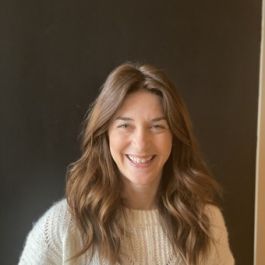
Diana Preziosi is a senior HR manager at Notarize, a platform for important online transactions. She learned early on that it was critical to achieve a holistic understanding of the different viewpoints, values and abilities of her multigenerational workforce. By accepting and encouraging each person to be themselves, she soon found that the employees of Notarize felt safe and secure in their work environment, and thus ready to produce at a higher level as well.
Tell us about a specific time when having a multigenerational workforce made your team stronger or improved the outcome of a project.
In a startup, you need diversity of both thought and experience to meet your objectives. You need speed and agility, as well as detail and diligence, but you also need the thought leadership and wisdom born from previous learnings. When building our rewards and recognition program here at Notarize, it was important to look holistically at what and how to acknowledge many different occasions and moments in time for our employees. Our people team is composed of people who range in age from their 20s to their 50s, and we’ve all built this process together. The value is the combination of different perspectives enabling us to think about all of our team at Notarize, rather than just one narrow perspective deciding what is best for the team. This allows us to develop better, more valuable options for our team.
In a startup, you need diversity of both thought and experience to meet your objectives.”
How do you work to leverage the unique strengths and skill sets of different generations within your workforce?
Our diversity, equity and inclusion team is a great example of this as an ongoing opportunity at Notarize. We strive to create a safe environment with a regular cadence where everyone can speak up and have an opportunity to participate, no matter what title or role they hold at the company. There’s no top-down agenda, in which responsibilities and job titles get in the way. In this group, we are individuals talking about important issues. Our opinions and lived experiences come to the forefront of the conversation on topics that impact the entire organization.
What steps have you taken to understand the diverse needs and values of a multigenerational workforce?
Our employees are all individuals with a wide breadth of experiences and backgrounds. Our goal is to provide a supportive environment, where team members feel safe and able to produce great work no matter their age. Offering flexibility, and demonstrating understanding that people have individual needs, are probably the most important ways we work to support our teams. On a semi-annual basis we do an employer Net Promoter Score survey across our entire organization, and by comparing the results across age ranges, we’re able to check our progress against our goals, and ensure we’re offering the best possible experience to everyone on our team, whether they’re in their 20s, 30s, 40s, 50s or 60s.
Project Archer
Jordan Weisman
CEO
At Project Archer, an augmented reality studio, Weisman and Ahlgrim know that all of their employees, regardless of generation, not only have unique strengths and perspectives but also quite a bit in common. Project Archer focuses on creating strong support systems and hiring forever learners, which are workers of all ages who are united by a shared attitude of curiosity, passion and growth. With these efforts in place, Project Archer’s multigenerational workforce is able to reach new heights.
Tell us about a specific time when having a multigenerational workforce made your team stronger.
Weisman: In designing the “future,” we constantly find ourselves pulling from related experiences in the past. One of Project Archer’s strengths is that we have a wide variety of pasts that are all very different in their origins and lengths. Older team members might introduce references from “The Jetsons,” while younger ones introduce something amazing from a K-pop band on TikTok. The learning is universal across the age spectrum and the combination of cultural and temporal experiences is generating some amazing work.
The combination of cultural and temporal experiences is generating some amazing work.”
How do you work to leverage the unique strengths and skill sets of different generations within your workforce?
Weisman: Understanding the diverse needs and values of our team starts with recruiting. We seek to understand and get to know every potential Archer Pack member before day one, and that exploration does not end there. We continue to provide a space where our team can bring their whole selves to the workplace, and keep a pulse on our team consistently. As we grow and change, so do our perks, benefits and culture. Those three things cannot stay stagnant for a growing company and constantly have to be evaluated to make sure we are supporting everyone as best as possible.
Krista Ahlgrim
HEAD OF PEOPLE
What steps have you taken to understand the diverse needs and values of a multigenerational workforce and then create a company culture that supports those different needs?
Ahlgrim: We work together as a leadership team to make sure we are supporting our multigenerational workforce. We find that as long as we stay true to our values, we are able to build a company culture together that supports everyone on an individual level as well as a unit. An example of this is hiring forever learners. No matter your age, if you come in with curiosity and a passion to continue learning, the more experienced can come in and learn from those newer in the workforce, and vice versa. Everyone has something to learn and everyone has something to teach. It’s what makes Project Archer such a thriving company.
Skillshare
Matt Cooper
CEO
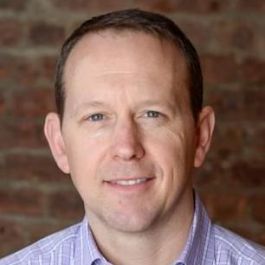
Tell us how having a multigenerational workforce makes your team stronger or improves the outcome of a project.
At Skillshare, we are proud to have a diverse roster of teachers on our platform from all generations. There’s no doubt Skillshare’s students benefit from the diversity of experience and points of view available from our teachers who offer beginner, intermediate and advanced classes. The diversity of talent on Skillshare has made our community stronger and more connected.
As a company, Skillshare is lucky to have talent from multiple generations and geographies, with team members in New York and Colombia and sites throughout the Midwest, Canada, the UK, Romania and Costa Rica. We believe diversity creates better thinking and, ultimately, a better product for our members.
How do you leverage the unique strengths and skill sets of different generations within your workforce?
In scaling Skillshare, we’ve worked to ensure we are hiring individuals who can handle the specific stage of growth we're in and help us reach the next stage. A former CEO of mine used to call these phases the “jungle,” “dirt road” and “highway.”
Since Skillshare has moved beyond the jungle (seed stage), and dirt road (Series A, B, C and D funding rounds) phases, we now find ourselves on the highway. This means we have a clearly defined market and products and are building significant growth.
We wouldn’t have gotten to where we are without multigenerational talent at our company. In the early stages of startups, most employees can do a little bit of everything. But as our company has grown, we’ve needed to hire specialists to help us get where we want to go. Depth of knowledge and specialization only comes with experience.
We wouldn’t have gotten to where we are without multigenerational talent at our company.”
What steps have you taken to understand the diverse needs and values of a multigenerational workforce in order to create a company culture and offer perks and benefits that support those different needs?
We aim to offer workplace accommodations and perks that advance our mission, brand and values, and create opportunities for personal and professional development. Flexibility is a core value at Skillshare and has become even more important in the wake of the pandemic. During quarantine, we pivoted to look toward the future and reinvent our employee experience to support a globally distributed workforce at scale. As Skillshare transitioned to a fully remote company, we offered employees stipends to set up their home offices, manage wellness, secure internet connectivity and even purchase coffee.
On the management team, we understand that different employees have different needs around flexibility. Some of our team members are moving out on their own for the first time, some are raising children and some take care of aging parents. Our flexible approach to work has enabled us to recruit superstars at all phases of life.
GR0
Jordan Feinberg
TALENT ACQUISITION SPECIALIST
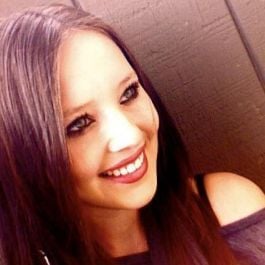
Tell us about a specific time when having a multigenerational workforce made your team stronger or improved the outcome of a project.
Fostering a multigenerational workforce at GR0 has proved to be a competitive advantage. With employees spanning four generations, we’ve created a diverse community that brings different ethics, values, habits and expectations to the table.
While working on an HR training and development project, I collaborated with everyone from millennials to baby boomers. This ensured that the training materials represented the different perspectives for new hires while diminishing unconscious bias. We ensure that our new employees are introduced to employees of varying levels and departments, allowing for open communication that paves the way for a healthy discourse; a diversity in perspective and opinions; and a richness in dialogue.
As an agency with clients who also span across generations and sectors, having a multigenerational workforce has provided a wealth of knowledge from all sectors of life that make us even better suited to cater to the needs of our customers.
Our leadership team at GR0 looks at our multigenerational workforce as a benefit rather than a challenge.”
How do you work to leverage the unique strengths and skill sets of different generations within your workforce?
It’s a tall order to foster a productive, collaborative environment with mutual respect when addressing the needs and preferences of so many different generations and backgrounds. However, our leadership team at GR0 looks at our multigenerational workforce as a benefit rather than a challenge.
We’ve found that creating mini pods within our structure, even within departments themselves, allows for a more open and collaborative environment where different generations can build trust in each other. Our SEO department is separated into smaller pods, with a three-level tier that oftentimes reflects the variety of generations working at GR0. Leveraging the intimate culture that these pods can create, we enable our employees to learn from each other in an engaged setting that doesn’t allow for generational differences to create a rift. This results in an open-source environment of problem-solving, managing and sharing information as we bring those new perspectives to our work and our clients.
There is no one-size-fits-all with a multigenerational workforce.”
What steps have you taken to understand the diverse needs and values of a multigenerational workforce and then create a company culture that supports those different needs?
There is no one-size-fits-all with a multigenerational workforce. Understanding what works and what doesn’t for each individual is necessary, and with that comes the need for flexibility. At GR0, we recognize that all of our employees want flexibility, whether that means time to care for children, an aging spouse or their own health.
The other idea we find consistent across all generations is wellness — a concept that includes everything from physical, mental and financial health. Our compensation and benefits packages are built to reflect these two areas: to ensure that our employees feel supported physically, mentally and financially, and to allow for a flexible work-life balance personally catered to each individual. Employees are our most valuable asset as a company, and we take pride in the fact that we can show our team how much we appreciate and support them by catering to their individual needs. What we see in return is an incredibly diverse, multigenerational workforce that goes above and beyond to invest in their work, service their clients, innovate new ideas and go the extra mile.
Paro
Saum Mathur
CHIEF PRODUCT AND TECHNOLOGY OFFICER
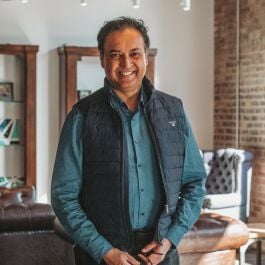
Paro pairs freelance finance professionals with companies for on-demand financial expertise. Chief Product and Technology Officer Saum Mathur credits a multigenerational workforce for keeping well-rounded perspectives.
Tell us about a specific time when having a multigenerational workforce made your team stronger or improved the outcome of a project.
I worked for an electronics manufacturer where most of the workforce was very tenured. As newer technologies emerged, we found the purchasing behavior of the new generation of consumers was very different from what the tenured workforce was used to delivering.
We changed our recruitment strategy to hire a lot of early-career employees and started a program of reverse mentoring, where the early career employees mentored older generations in how the younger demographics behaved.
I invited the early-tenure employees to participate in annual strategy sessions, which were traditionally limited to senior executives. As a result, the product strategies were better, as they were designed to resonate with the new generation of consumers.
How do you work to leverage the unique strengths and skill sets of different generations within your workforce?
Each generation brings its own strength. Older employees bring a wealth of experience based on what has worked for them and has not. Furthermore, while technology is evolving quickly, many principles and concepts haven’t changed. So, older employees can bring the wisdom of applying the concepts and principles, even if the actual implementation of the new technology is different.
On the other hand, the younger generation has the knowledge of the latest technologies and the values of their generation to bear on the product design. Their unbridled enthusiasm and energy is a boon to multigenerational teams.
Companies that lean heavily toward a younger workforce end up reinventing the wheel, while companies leaning toward an older workforce tend to be slow market movers.
Ensure that the focus groups for consumer studies are diverse in every way possible.’’
What steps have you taken to understand and cater to the diverse needs of a multigenerational workforce?
Most of the leaders in my generation ignore the best coaches that are available to them: their own children.
Once I was working on a project that I thought was industry leading and would change the way businesses interact with their customers. I happened to bring this project up with my teenage daughter. In the next two hours, she had shaken my confidence in the viability of the project. I learned a lot about how her generation, which would be the target audience, really buys from businesses and what they value. What I learned was vastly different from the requirements that were written by someone who was from a different generation.
Lesson learned: Ensure that the focus groups for consumer studies are diverse in every way possible!
CSC Corptax
Chelsey Cochran
HUMAN RESOURCES GENERALIST
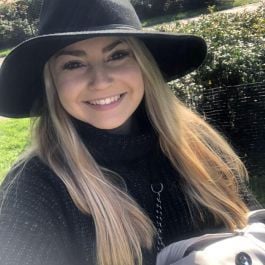
CSC Corptax, a software development company providing corporate tax solutions, made Built In’s list of 100 Best Midsize Companies to Work for in Chicago 2021. Human Resources Generalist Chelsey Cochran believes that pairing older and younger workers together on projects has paid off.
Tell us about a specific time when having a multigenerational workforce made your team stronger or improved the outcome of a project.
We believe opportunities for learning and career growth are ageless. An individual with more tenure can act as a mentor and leader, while someone early in their career can bring experience with newer technologies to the table.
When the Tax Cuts and Jobs Act of 2017 legislation hit, it brought rapid changes to corporate tax. We had to quickly address those changes and deliver for our customers. We brought on a seasoned tax change expert who worked hand-in-hand with our junior technical communications team to craft the messaging and get it out to customers.
We believe opportunities for learning and career growth are ageless.
How do you work to leverage the unique strengths and skill sets of different generations within your workforce?
Last year’s shift to our very first virtual users’ conference illustrated how our multigenerational teams innovated together to pull off a successful event. Our team members’ different levels of experience and their diverse perspectives allowed us to fully address our customers’ needs in a totally new environment.
Every generation contributed: a younger team member led website creation for the conference, while experienced team members planned and executed it, incorporating great ideas from everyone.
Having everyone’s skills focused on the same goal was key to the event’s success. Associates took on roles outside of their normal work scope to contribute to the seven-day virtual conference, which garnered 4 percent higher attendance rates than our last in-person conference. Most importantly, we received positive feedback from our customers.
What steps have you taken to understand and cater to the diverse needs of a multigenerational workforce?
Since we’ve gone remote, we’ve focused on engaging with all employees. We offer something for everyone, including bingo and trivia nights — and we’ve continued to celebrate birthdays and work anniversaries.
Acting on employee feedback also helps us meet the needs of our multigenerational workforce. It enables us to create a culture that supports everyone, and it ties into our value of “Being Genuine.”
We want our employees, wherever they are in their careers, to feel that our perks and benefits support them as they grow within CSC Corptax — whether that’s tuition reimbursement, mentorship opportunities, or 6 percent 401(k) matching for retirement. And while some employees will return to our offices when it’s safe to do so, remote work and flexibility will always be key for us. We’ll continue to enhance our benefits to foster connection and inclusion.
An in-depth analysis of diversity, equity, and inclusion in the technology industry.




